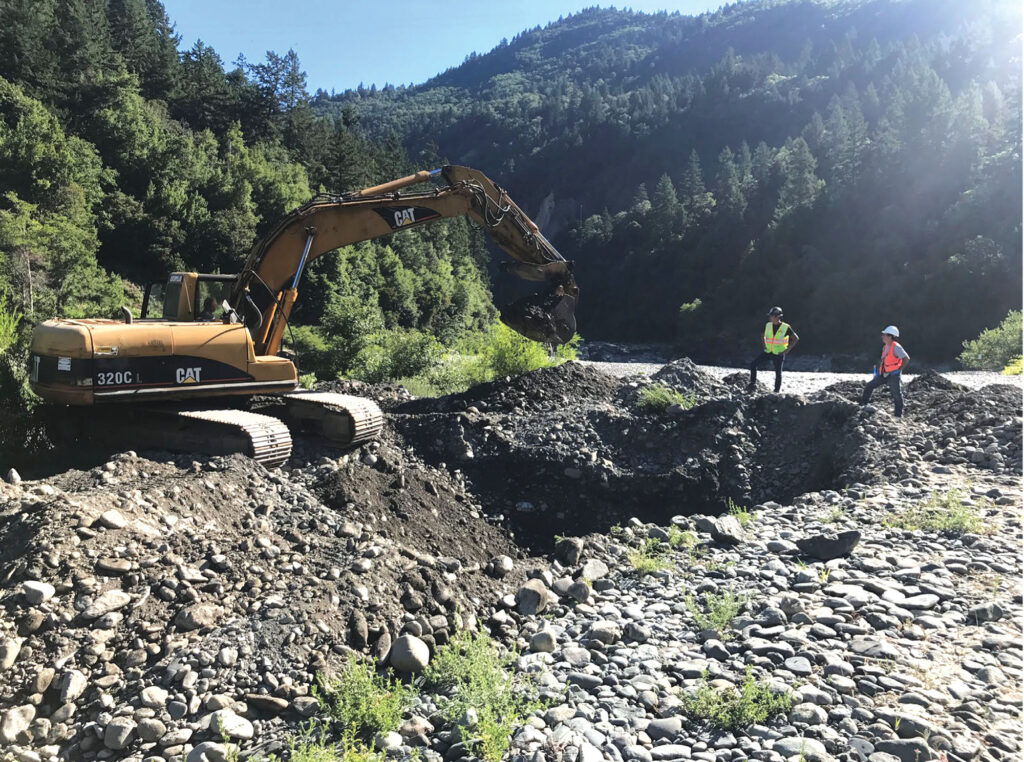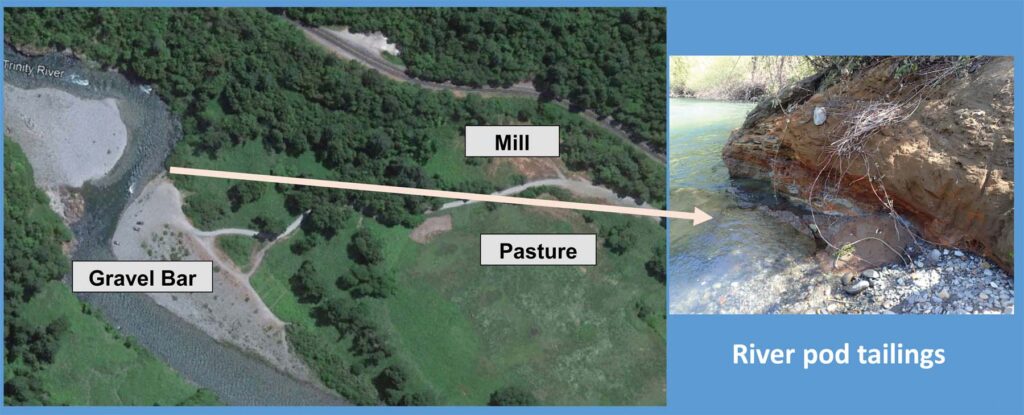Celtor Chemical Works Superfund Site to Be Cleaned a Second Time by U.S. EPA

More Contamination Identified After 1980s Cleanup
By Allie Hostler, Two Rivers Tribune
The United States Environmental Protection Agency is soon to begin a second major cleanup of the Superfund site known as Celtor Chemical Works in the area of Red Rock in Hoopa after additional mine waste contaminated with lead and arsenic were discovered in 2016.
Fishermen and river-goers should expect the river access area at Red Rock to be closed for four-to-six weeks while the sites are excavated to remove contaminants. Estimated closure dates are from the end of July through mid-September.
Together, with the Hoopa Valley Tribe, the U.S. EPA has developed a detailed plan to remove the mine tailings to prevent people from being exposed to the contaminated waste.
“The exposed mine tailings located at Red Rock from the Celtor Chemical Works site has been a legacy contaminant and after seven years from the initial investigation that triggered the re-opening of the Superfund site, U.S. EPA is taking action to address the risk in this highly recreated area,” Hoopa Environmental Protection Agency Director Ken Norton said. “We are grateful for the staff at U.S. EPA who have prioritized this site and their transparency during this continued effort.”
Crews will dig up contaminated material at various sites within the 26-acre area. The waste will be transported off of the reservation to a regulated landfill. Depending on the water level in the Trinity River, they may need to construct a cofferdam to temporarily dewater a small section of the River to access some of the area that may currently be submerged.
U.S. EPA project manager Eric Canteenwala presented the project to the Hoopa Valley Tribal Council during a June council meeting where he explained that the project has undergone consultation with Hoopa Valley Tribal Fisheries as well as the National Marine Fisheries Service, as well as all necessary environmental approvals required under the National Historic Preservation Act, Endangered Species Act, National Wild and Scenic Rivers Act and Clean Water Acts Sections 401 and 404.
Canteenwala said that the concentration of the contaminants, relative to other Superfund sites, is not considered high. But, could be concerning if people are exposed often, and over a longer period of time. The main vehicle of exposure is ingestion. For example, if children are playing in the sand then eating without washing their hands, they may become exposed.
“However, I don’t think children would suffer the negative health effects at these concentrations,” Canteenwala said. “You would have to be there a lot and over a long period of time.”
The Celtor Chemical Works site mine tailings can vary in texture and color. The Reddish brown color is generally tailings, but they can also take the form of a dark, black, and be claylike. They can also be fine white powder, Canteenwala said. “They take on different textures and colors that allow us to visually identify them.”
Celtor Chemical Works mill was in operation for only four years from 1958 to 1962. The mill processed ore from the Copper Bluff Mine to extract copper and zinc. The Tribe leased the land in 1958 to Celtor Chemical Works. According to a memorandum attached to a 1985 Record of Decision, in 1960 Celtor became delinquent in its royalty payments to the Hoopa Valley Tribe. By 1962, Celtor owed the Tribe $23,592 and mining and milling operations ceased on June 2, 1962. The following March, the BIA, as the trustee for the Hoopa Valley Tribe, cancelled the leases of both the Copper Bluff Mine and Celtor Chemical Works.
Additionally, in 1961, Celtor Chemical Works was found guilty of violating California Fish and Game Code 5650 for polluting the Trinity River. In 1995, a U.S. District Court denied Celtor Chemical Works’ motion for a summary judgement and upheld that Celtor and it’s president and primary share holder, Dr. Celestre, a San Francisco Physician, were to be held responsible for costs associated with the site cleanup.
According to the 1985 ROD memorandum, “a very large pile of tailings” was left on the sand and gravel river bar, along with the tailings that were left at the mill site. These large piles of tailings were mostly washed away in the 1964 flood, however remaining contaminants were believed to have caused acidic surface water runoff and elevated concentrations of metals in the soils throughout the mill site area. California Department of Health and Services and Indian Health Service sampling occurred in 1981, which prompted response from the EPA.
The site was added to the National Priorities List in 1983. Several cleanup actions occurred from July 1983 through December 1988. In September of 1989 the EPA filed its superfund site closeout report.
In 2016 additional site contamination was inadvertently discovered. Under the Comprehensive Environmental Responsibility Compensation and Liability Act (CERCLA), the EPA was able to take additional action to protect human health and the environment at the site even though it had previously been removed from the National Priorities List. They began to dig test pits and soil sampling occurred as well as sonic boring in the mill area in 2018. The Pandemic halted field sampling and completion of risk assessments for about a year before additional cleanup planning could be completed.
This second round of cleanup is expected to cost $1.9 Million.
Canteenwala explained that the Celtor Chemical Works site is not the same as the Copper Bluff Mine Superfund site. Although the Celtor Chemical Works site processed ore from Copper Bluff Mine, the two Superfund sites are separate listings on the National Priorities List and treated as two separate projects by the U.S. EPA. The Copper Bluff Mine is currently being investigated and monitored for acid discharge in order to evaluate possible cleanup measures.
A complete online record of the Celtor Superfund site can be found by typing “Celtor Chemical Works” into the search bar at epa.gov.
A similar Superfund site record is available for the Copper Bluff Mine on the same website.
Those with questions, comments or concerns are invited to contact the Hoopa Valley Tribe’s Environmental Protection Agency/Land Management Department at 530-625-5515.
*All photos are courtesy of Eric Canteenwala’s powerpoint presentation to the Hoopa Valley Tribe in June, 2023.



